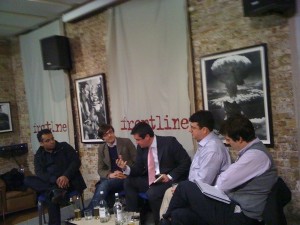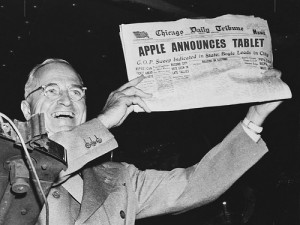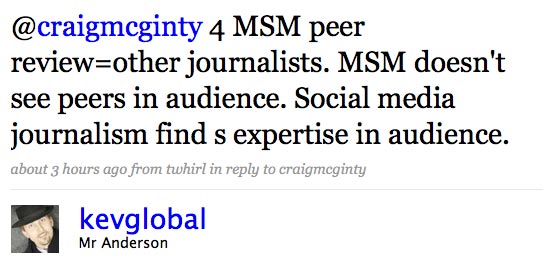Last month Johnston Press journalists, enraged by a new publishing strategy and online/print content management system (CMS) called Atex, voted for group-wide industrial action. Atex will make reporters responsible for subbing and editing their own newspaper stories using pre-made templates. The vote was thwarted by a High Court challenge; a re-ballot is underway.
Now several other companies including Archant are either using or considering using the same system.
The NUJ has a point when they say that with fewer staff and less checks and balances, more errors will get through – this aberration of a front page in the JP-owned Bedfordshire Times & Citizen recently is a classic example.
Yesterday I questioned exactly why the union was opposing Atex; included in the union’s greviances were baffling and unexplained “health and safety” concerns. The union later told Journalism.co.uk that they meant that it adds to staff stress levels.
But, I went on in conversations both online and privately, isn’t this part of a wider problem? The NUJ has a fundamental belief that sub-editors should sub stories and reporters write them. Like the pre-Wapping ihousen-printers that jealously guarded their very specific, outdated roles, the ideal outcome for the union is to maintain the status quo and protect jobs.
The reality isn’t quite that simple. Atex, as more than one person said, is far from the innovative answer that newspapers need. One person with knowledge of how Atex works, who works for a company that is planing to implement it and asked not to be named, put it to me like this:
We’re still in transition in my newsroom at the moment – we haven’t switched to using it for the web yet. However, if the system goes ahead as planned we will not be able to insert in-line links into stories, nor will we be able to embed content from anywhere else online. It’s possible to build link boxes that sit next to web stories, but it’s time consuming compared to in-line links – and if our current CMS is anything to go by, in the press of a busy newsroom, it won’t get done.
That sounds like a retrograde step. Far from holding back innovation, it sounds like JP journalists are right to oppose the move. This is from a company whose former chairman of nine years, Roger Parry, last week criticised the very board that he chaired for not investing enough in digital media (via Press Gazette). Exactly who else is there to blame?
But it gets worse:
For those of us who possess data skills and want to make mashups, visualisations and so on, this is a massive inhibition – even if we find the time to innovate or create something really special for our papers, we’ll have no outlet for it. It also means we can’t source video or images for our stories in innovative ways – no YouTube embeds or Flickr slideshows – cutting us off from huge resources that could save time, energy and money while enhancing our web offering.
It’s astonishing that we’re even considering such a backwards step to a presumably costly proprietory system when so many cheaper, more flexible, open source solutions exist for the web.
Regional reporters, web editors and even overall editors will read that and find this frustration of digital ideas by technical, budgetary limitations very familiar. The last point rings loudest of all: cheap, dynamic blogging solutions like WordPress and Typepad provide all newsrooms need to create a respectable news site. Publishing executives seem to find it hard to believe that something free to use can be any good, but just look at what’s coming in the in-beta WordPress 3.0 (via @CasJam on Mashable).
So the union’s misgivings in this case appear to be well placed. The drop in quality from Johnston’s cost-cutting is there for all to see in horrendous subbing errors, thinner editions and entire towns going without proper coverage.
Unfortunately, journalists have to accept that no amount of striking is going to bring back the staff that have gone and that times have changed. Carolyn McCall’s parting shot as CEO of Guardian Media Group was to repeat her prediction (via FT.com) that advertising revenues will never return to pre-recession levels – and don’t forget Claire Enders’ laugh-a-minute performance at the House of Commons media select committee, in which she predicted the death of half the country’s 1,300 local and regional titles in the next five years.
Regional publishers may not all have a solution that combines online editorial innovation with a digital business model right now. But to get to that point, reporters will have to cooperate and accept that their roles have changed forever – “sub-editor” may be a term journalists joining the industry in five years will never hear.
Patrick Smith is a freelance journalist, event organiser and formerly a correspondent for paidContent:UK and Press Gazette. He blogs at psmithjournalist.com and is @psmith on twitter.


![Reblog this post [with Zemanta]](https://img.zemanta.com/reblog_e.png?x-id=59ce27b8-13a6-43ae-b691-89cbf8a3bfb8)

